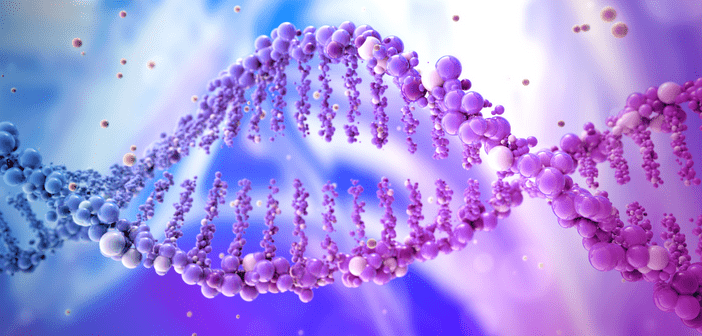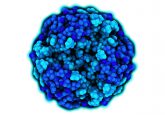Life finds a way: 2.6 billion year old ancestors of CRISPR system discovered

An international research team – consisting of teams from the Spanish National Research Council, the University of Alicante (Alicante, Spain), the Rare Diseases Networking Biomedical Research Center (CIBERER; Madrid, Spain), the Ramón y Cajal Hospital-IRYCIS (Madrid, Spain) and other national and international institutions – has managed to reconstruct ancestors of the CRISPR-Cas system dating back 2.6 billion years in order to study their evolution over time. The team believes this “opens up new avenues for gene editing”, as they have discovered that the reawakened systems work and are more versatile than current versions meaning they could open doors for revolutionary applications.
CRISPR stands for Clustered Regularly Interspaced Short Palindromic Repeats, which refers to the repeated sequences found in the DNA of archaea and bacteria. Within the repeated sequences present within these microorganisms, there are fragments of genetic material from viruses that had infected previous ancestors. This is so the microorganisms are able to recognize a repeat infection and fight it by cutting the contaminant’s DNA utilizing Cas proteins related to these repeats, essentially a mechanism of anti-viral defense. The CRISPR-Cas system’s ability to recognize DNA sequences is incredibly useful as they act as molecular shears within cells and current technology is employed to enable genetic material to be cut and pasted into any cell.
Francis Mojica, researcher at the University of Alicante and the person who discovered the CRISPR-Cas technique commented,
“This research signifies an extraordinary advance in knowledge about the origin and evolution of CRISPR-Cas systems. About how the selective pressure of viruses has over billions of years been fine-tuning rudimentary, initially not very selective machinery; this had been taking place until a sophisticated defense mechanism was produced; it is a mechanism capable of distinguishing with great precision between its own DNA, which it must preserve, and the genetic material of unwanted invaders, which it must destroy”
Mojica further stated,
“the work represents an original approach to the development of CRISPR tools to generate new tools and improve those derived from existing ones in current organisms”
You may also be interested in:
- Bioanalytical considerations for gene and cell therapeutic products
- Signed, sealed, delivered: CRISPR/Cas9 gene editing to restore renal function
- eBook: Expedited programs for gene and cellular therapies
There are current research attempts to find new versions of the CRISPR-Cas systems with distinctive properties across the globe and in order to do this researchers have been looking to explore or modifying the systems of various species living in extreme environments using molecular design techniques. Another way of finding new systems is to look for them in past material, which was the basis of this study. Reconstructions of ancestral proteins and genes from extinct organisms are conducted to find what qualities they show and whether they can be utilized for biocomputing techniques. In this recent study, the research team have managed to trace the evolutionary history of CRISPR-Cas systems from ancestors dating back 2.6 billion years and reconstruct it for the first time.
The team conducted a computational reconstruction of ancestral CRISPR sequences, synthesized them, studied and confirmed their functionality.
Lluís Montoliu, researcher at the National Biotechnology Center of the CSIC (Madrid, Spain) and CIBERER commented on the team’s findings,
“What is surprising is that we can revitalize Cas proteins that must have existed billions of years ago and find that they already had the capacity then to operate as gene editing tools; we have now confirmed that by successfully editing genes in human cells,”
Additionally, they found in the study that the CRISPR-Cas system has gradually developed to be more complex over time and is a sign of the system’s adaptive nature. This could suggest that it has been adapting to new virus threats hanging over bacteria throughout evolution.
Miguel Angel Moreno, head of the Genetics Service at HRYC-IRYCIS-CIBERER remarked on the project’s findings,
“The ingenuity that an ancestral nuclease could have, insofar as it does not so specifically recognize some regions of the genome, turns them into more versatile tools for correcting mutations that until now could not be edited or were not corrected very efficiently.”
Raúl Pérez-Jiménez, Nanobiomechanics Group Leader at CIC nanoGUNE and lead for the project further stated,
“Current systems are highly complex and are adapted to function within a bacterium. When the system is used outside this environment, for example in human cells, it is rejected by the immune system and there are also certain molecular restrictions that limit its use. Oddly enough, in ancestral systems some of these restrictions disappear, which gives these systems greater versatility for new applications,”
Ylenia Jabalera, researcher in the project at nanoGUNE discussed what the study’s findings might mean for the future,
“This scientific achievement can make available gene editing tools with properties different from the current ones, and which are much more flexible; that opens up new avenues in DNA manipulation and treatment of diseases such as ALS, cancer and diabetes, or even in diagnostic tools for diseases.”
Sources: Alonso-Lerma, B., Jabalera, Y., Samperio, S. et al. Evolution of CRISPR-associated endonucleases as inferred from resurrected proteins. Nat Microbiol (Epub ahead of print) (2023). doi: 10.1038/s41564-022-01265-y, Phys.org press release, www.phys.org/news/2023-01-billion-year-old-ancestors-crispr-gene-editing-tool.html




